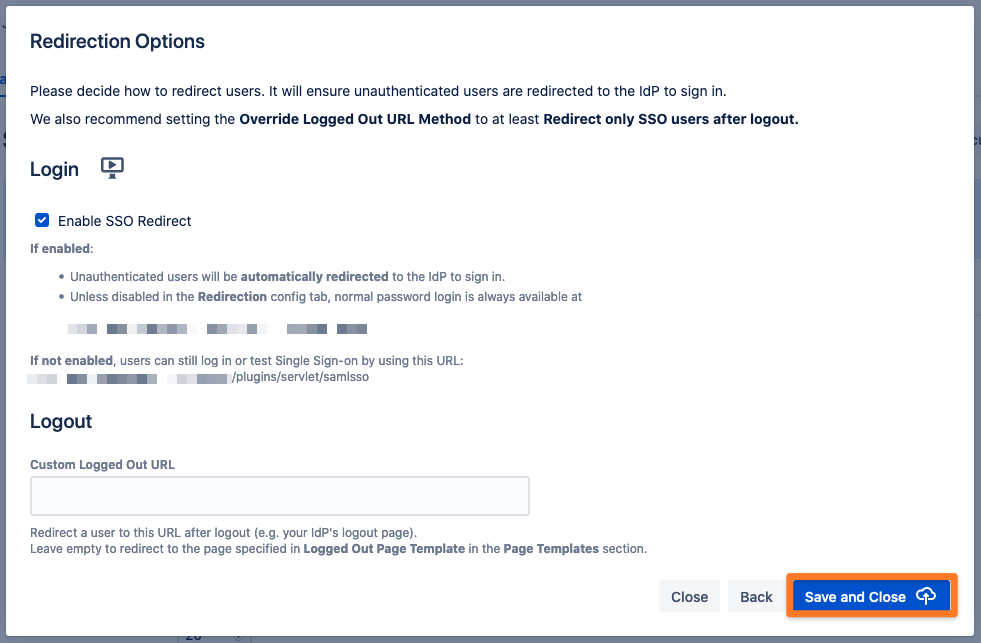OneLogin with Manual Provisioning
Goal
After completing this setup guide, you will have setup OneLogin with Manual Provisioning and your Atlassian Server or Data Center product for the SAML SSO app. Additionally, you will test SSO and enable the SSO redirection.
Prerequisites
To use the SAML SSO app with OneLogin, you need the following:
An OneLogin subscription
A (trial) subscription for the SAML SSO app for Server or Data Center
Admin access to your Atlassian product
Users are already available in Jira and OneLogin.
Video Guide
Step-by-Step Setup Guide
Install the SAML SSO App for Server or Data Center
In your Atlassian product, open the in-product marketplace as described in the Atlassian documentation.
Search for "resolution saml" and click "Install" for SAML Single Sign On (SSO) by resolution Reichert Network Solutions GmbH.
After the installation is complete, click on Manage, then choose Configure.
Now, you are on the Add-on / app configuration page and the first step of the setup wizard will appear.

First Steps - Wizard
After you clicked "Configure", the Wizard will be triggered. If not, or if you want to add another Identity Prover (IdP) to your existing configuration, click on "+ Add IdP". This guide assumes, that there is no IdP configured.
The Wizard greets you with information, click on "Add new IdP" to proceed.
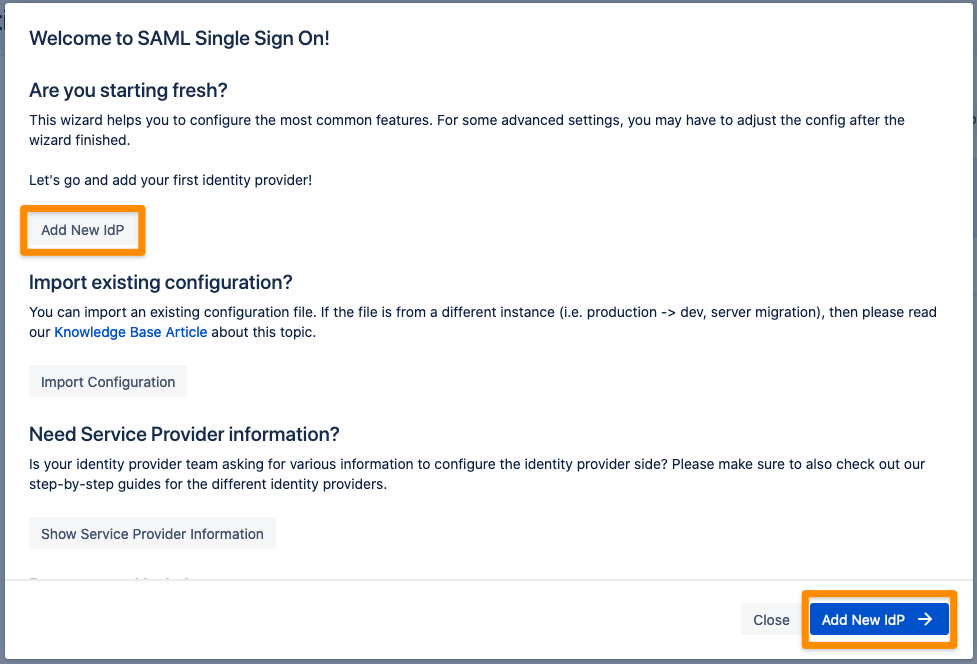
For the IdP Type, choose "OneLogin". You can also choose a name. Click on "Next" to continue.

In the next step, you will configure OneLogin. Please keep this tab open or copy the information.

Create and Configure An OneLogin App for SAML SSO for Atlassian Data Center or Server
Adding an Application for the SAML SSO App
Log into the OneLogin Portal as an admin. Go to Applications > Add Apps, search for Resolution SAML, and select it.

On the initial Configuration tab, click Save to add the app to your Company Apps and display additional configuration tabs. When you click Save, the Info tab appears.

Go to the Configuration tab and enter your Base URL (you only need to enter your subdomain). Click Save.
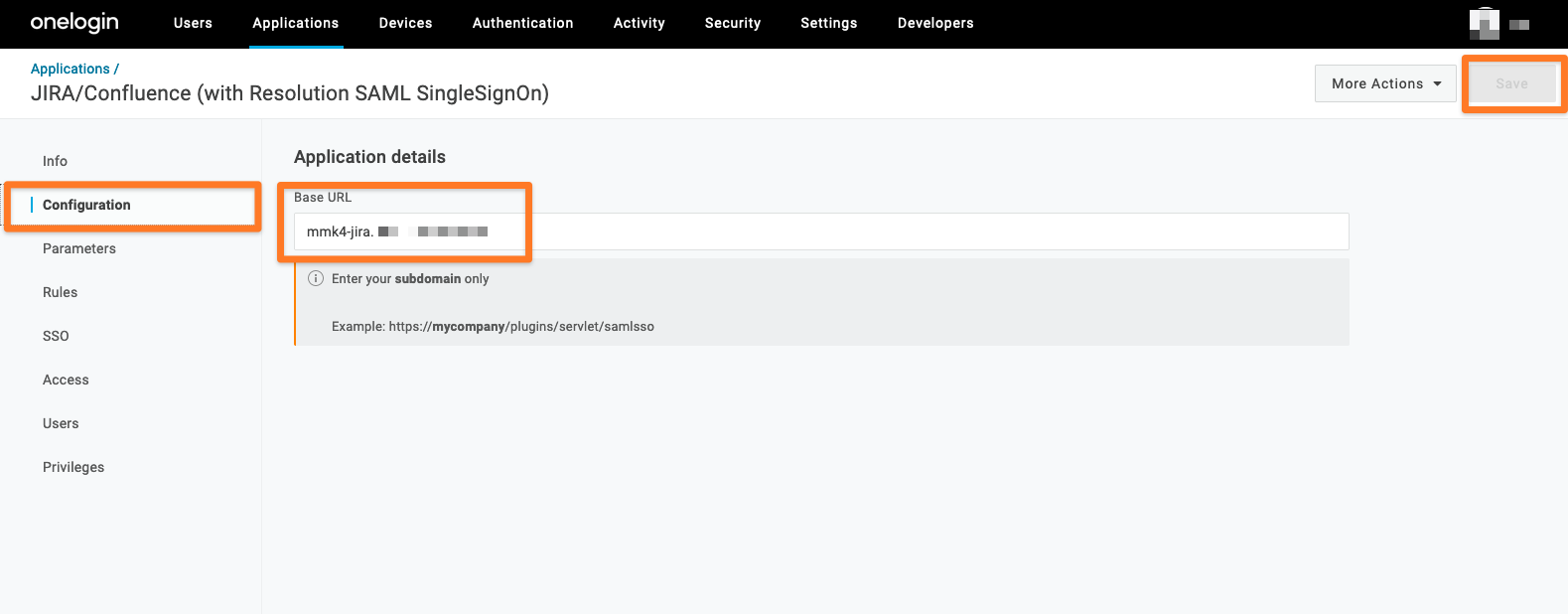
Afterwards, the following section will be checked
Access
You have the possibility to allow the access to the application on a Role-based policy. In our documentation, we will use the Role → Default (this means that everyone who is a part of the Default role has access to the application).
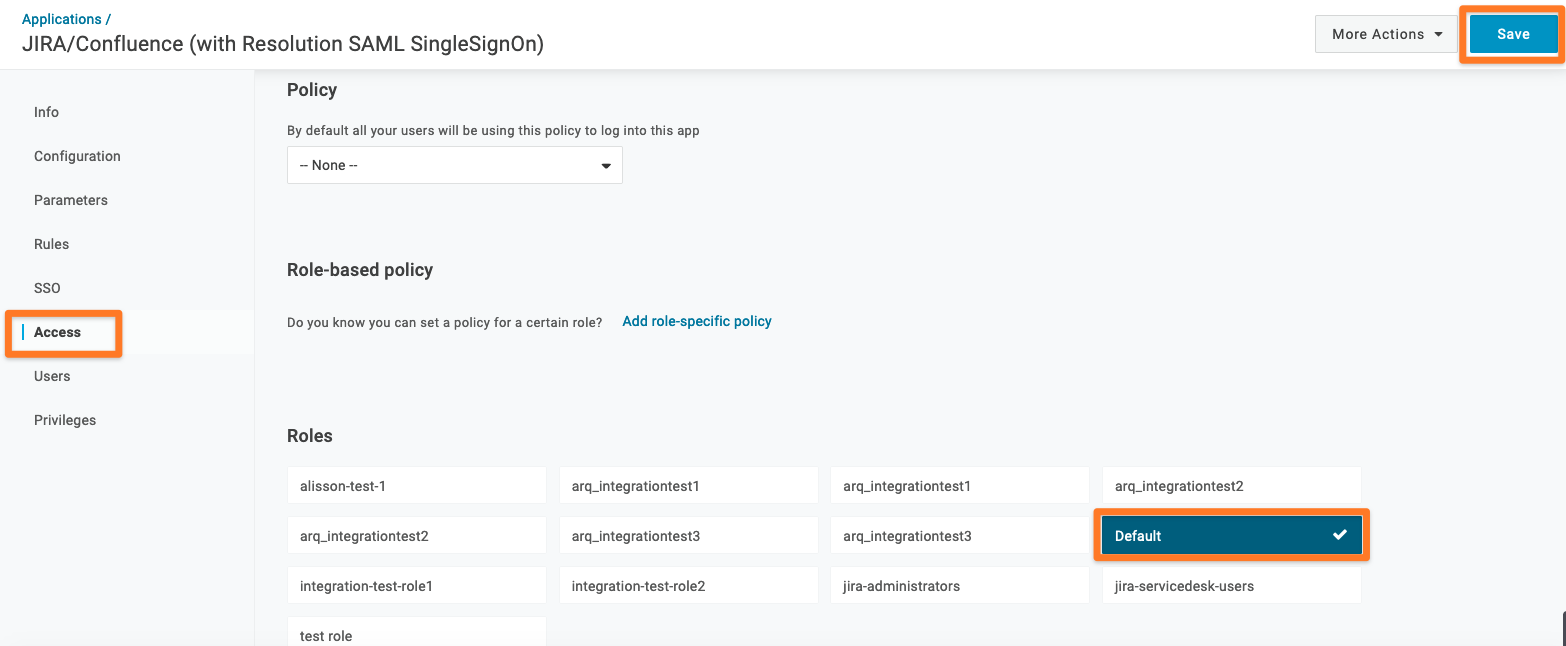
The next step is to copy the SAML Metadata. Just go to More Actions → SAML Metadata. It’s enough to hover over SAML Metadata, do a right mouse click and choose Copy Link Location.
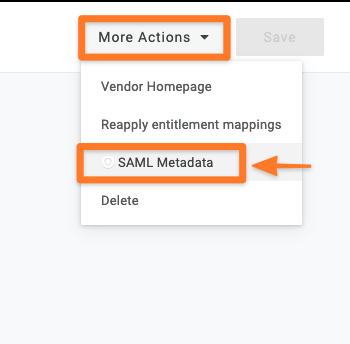
Finishing the Configuration - Wizard
Now, you will paste the App Federation Metadata URL you have obtained before. Paste the App Federation Metadata URL in the "Metadata URL" text field.
You can also configure the plugin without the metadata XML URL. Please choose another option from the dropdown menu and proceed as the wizard guides you.

Afterwards, click on "Import".
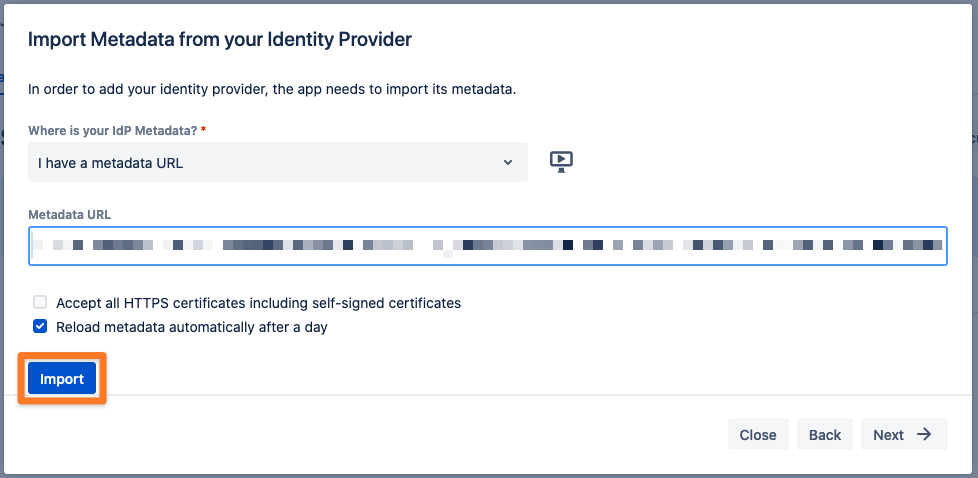

Click on "Next" to continue.
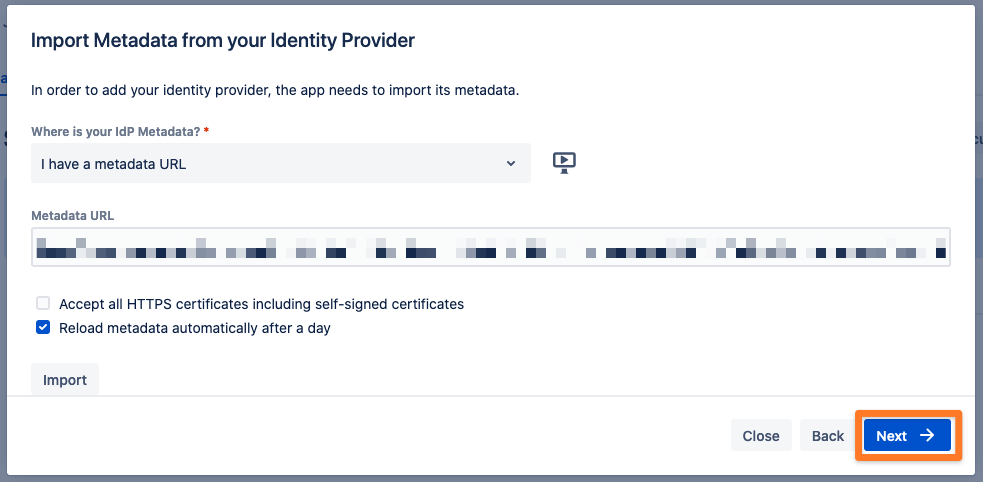
Click on Save & Next.

Now it is time to test your configuration.
Testing SSO
The wizard also allows to test the Single Sign On. Just follow the steps to test if the login works as expected.
Click on "Start test" to proceed.

Copy the orange marked link and open a new incognito/private tab or a different web browser. Then, paste the link and navigate to it.

SSO Redirection
As a last step, you can set the Enable SSO Redirect option. If set, all users will be redirected to Single Sign On, thus they will be logged in via the IdP. Click on Save & Close to finish the configuration.
